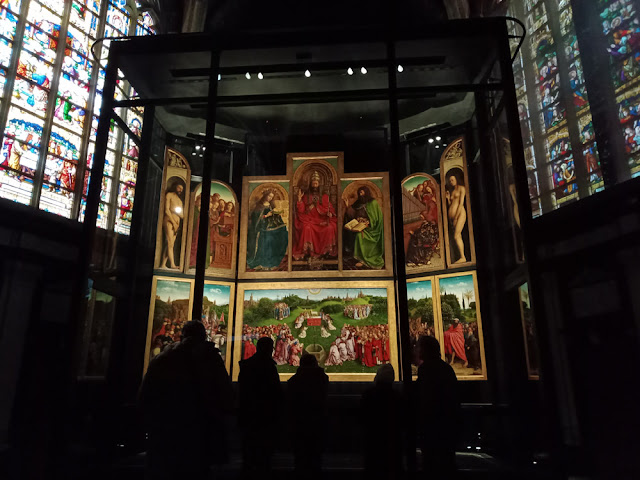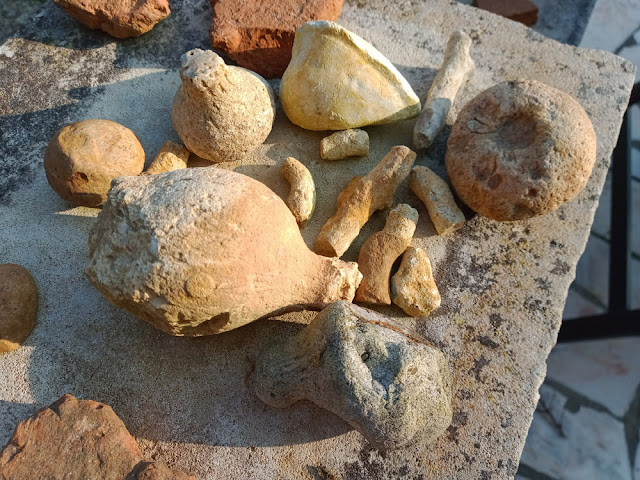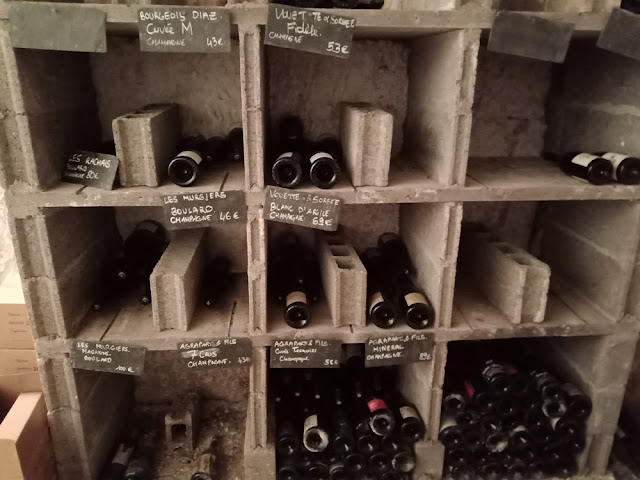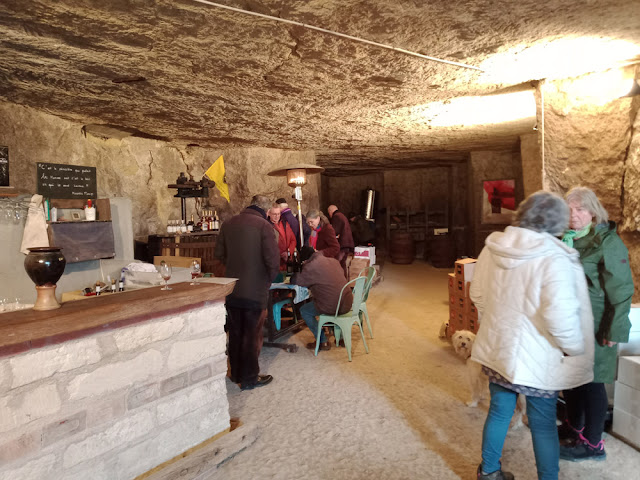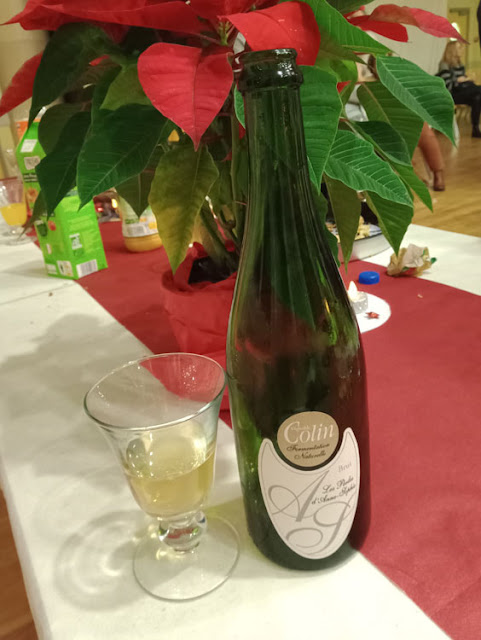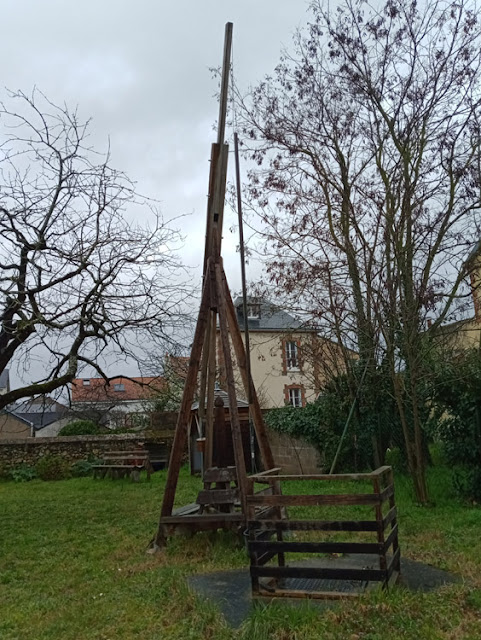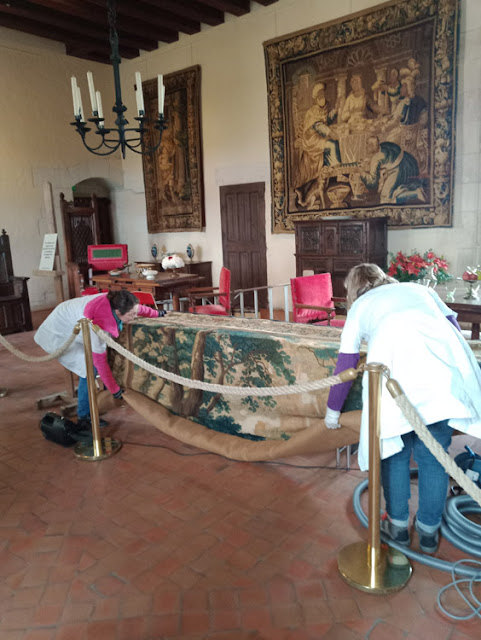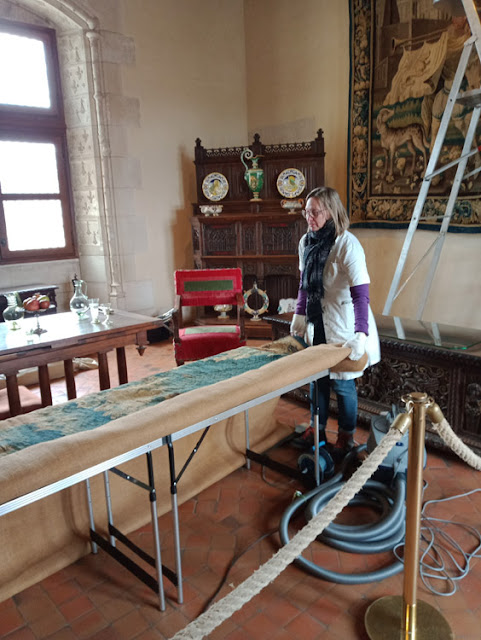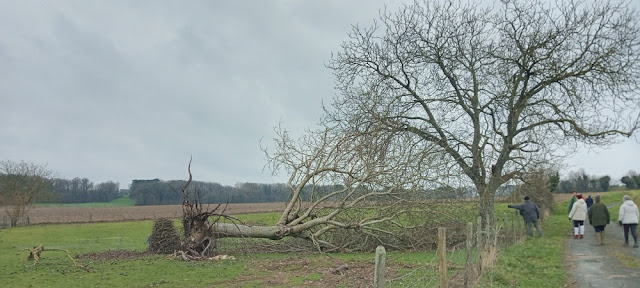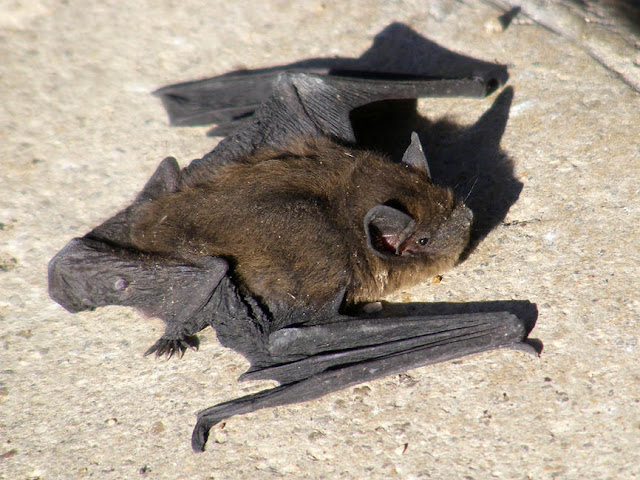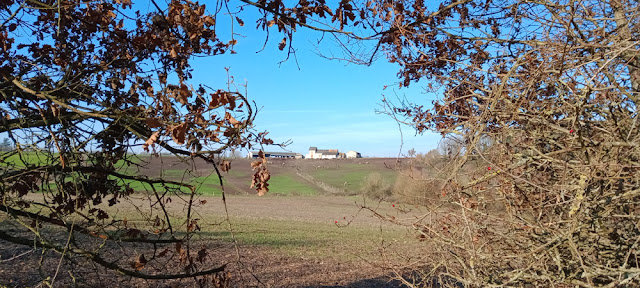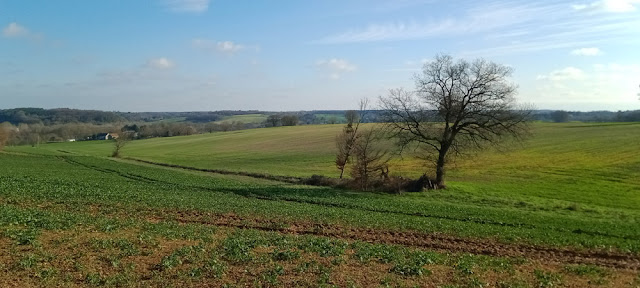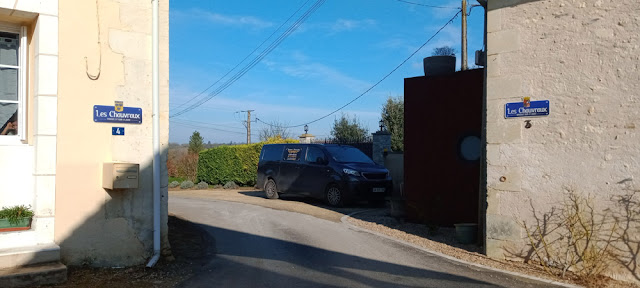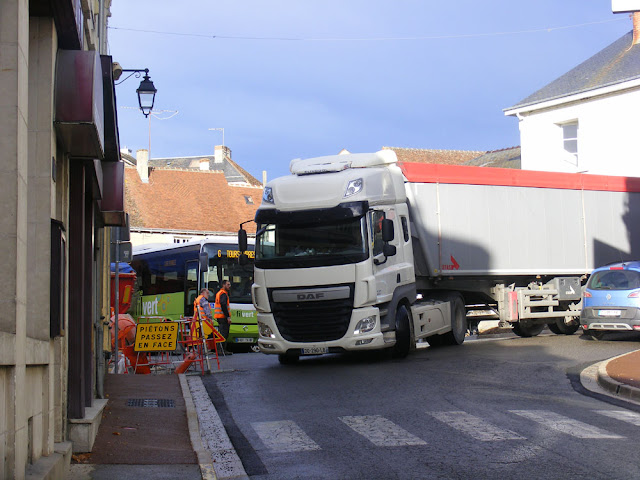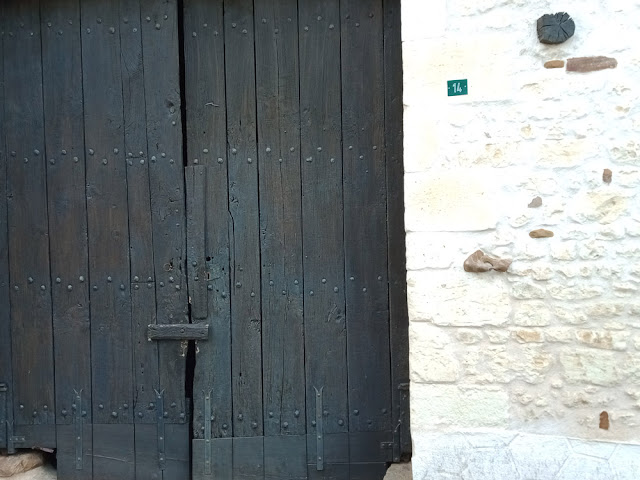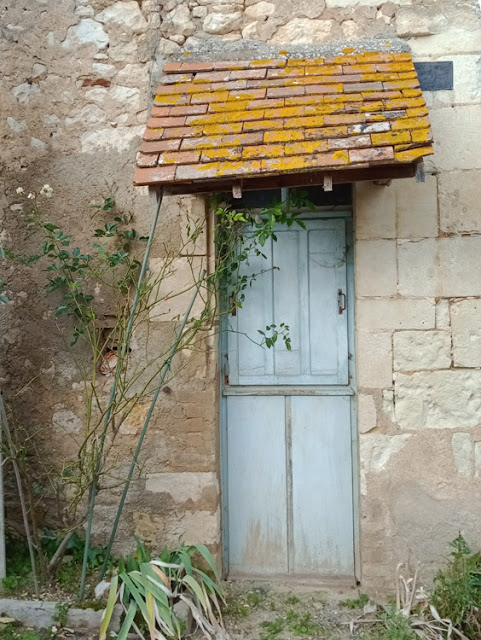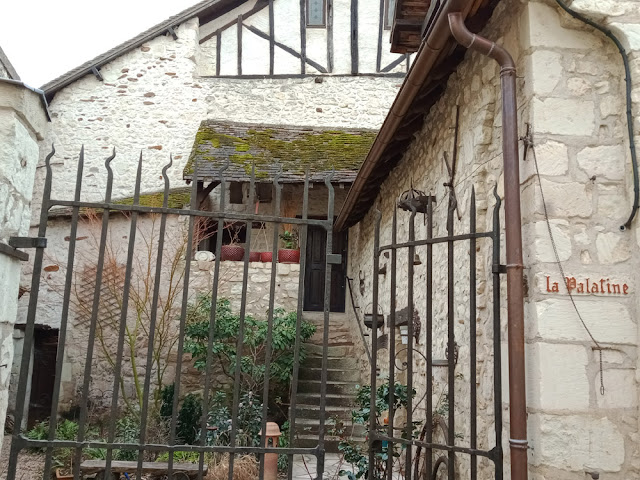Recently a client asked me what French cuisine was. We'd just observed that there are Italian restaurants everywhere in the Western World. Despite the reputation of French cuisine as being the height of perfection (that's how the UNESCO World Intangible Heritage listing describes it), French cuisine is not so universally available or loved at a grassroots level.
 |
A picnic in the garden of friends.
|
I didn't really have a good answer for my client apart from talking about Escoffier and sauces but it set me thinking and I posted the question on Facebook in an English language group of keen domestic cooks who enjoy French food. Many of the answers waffled about food prepared with love and passion, without giving any real indication of what exactly was being concocted for the table. In fairness to those who responded in this fashion, I had specified that just giving me a list of classic French dishes would not cut it.
 |
Organic artisanal bread at our local market.
|
To my considerable surprise, not a single person mentioned the French concept of terroir! And a lot of people appear to be convinced that all French food contains vast quantities of butter!
 |
Cured salmon at our local market.
|
My observation is that France sits in a unique location, the only truly central western European nation, and this has influenced its food heritage (and indeed, made it quite multifaceted). France has a northern European face and a southern European face, and lots of regions. On the ground in France regional cuisine is more important than national a lot of the time.
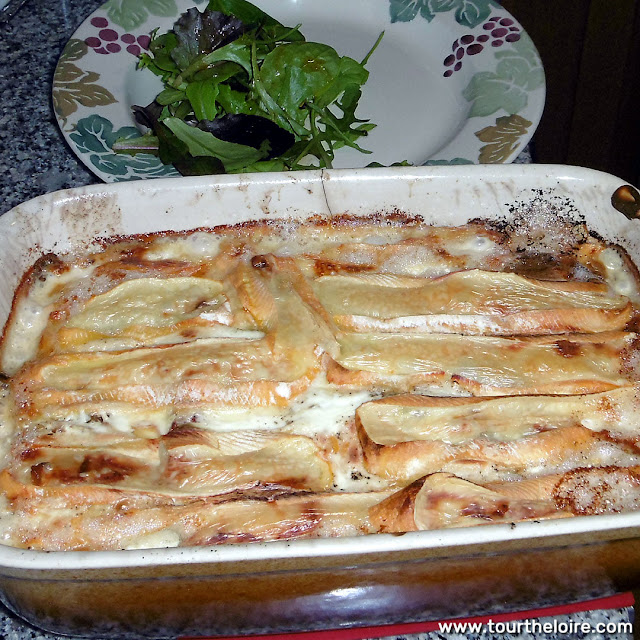 |
Homemade tartiflette.
|
In the north the flavours and colours are subtle, muted, often sophisticated and complex. This is the France of butter, cream, soft cheeses, white asparagus, endives or cabbages and delicate seasonings (thyme is about as strong as it gets and garlic is used judiciously). Here in the Touraine Loire Valley we are mostly influenced by this northern tradition.
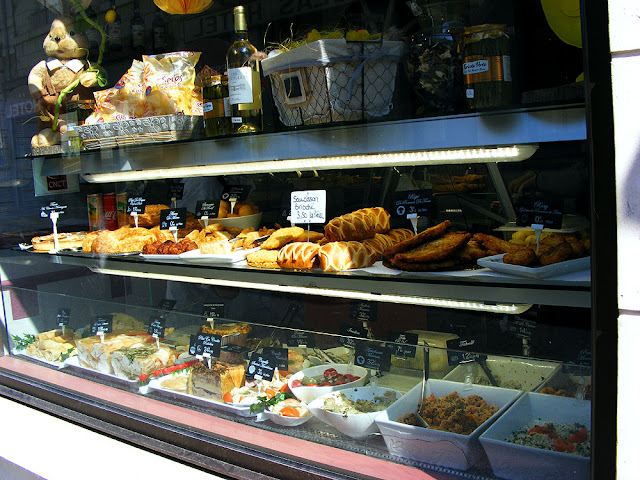 |
The window of the charcutier in our village.
|
In the south the flavours are more robust and the colours more vibrant. Peppers, tomatoes and aubergines feature, as well as olive oil, stone fruits and citrus. Seasonings have more zing and can include piment d'Espelette (a type of mild chilli) and basil.
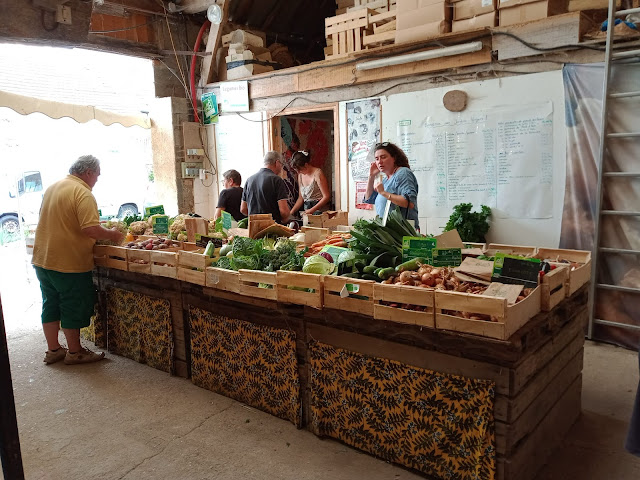 |
A farm shop selling organic vegetables on the edge of our village. The man on the left is a Michelin starred chef.
|
As well as the bourgeoise tradition of haute cuisine developed by Escoffier and the famous restaurant rating system of Michelin stars, there is a nation wide tradition of simple nourishing unpretentious regional peasant food too. Root vegetables (carrots, turnips and celeriac) and pulses (lentils and white beans) are remarkably popular, and pork is everywhere. But likewise, almost every French village has a patissier, making ornate tarts and complex multilayered slices.
Another universal element of French cuisine is beautiful presentation. The French understand that food should delight the eye as well as the tastebuds. This concern for aesthetics applies to the table setting as well, so that a mood is set for enjoying the meal before it even appears in front of the diner.
 |
Homemade apricot clafoutis.
|
Salads, or more precisely, salades composées, are one of the unsung heroes of French cuisine. The most well known to anglophones is salade nicoise, but you can get delicious and satisfying salads all over France. Lettuce is not a garnish here, it is meant to be eaten, and tomatoes are something you look forward to in the late summer when they are ripe and full of flavour. Out of season tomatoes are not consumed much by most people, although these days they are available.
 |
Wine, delivered to our house by our local Michelin starred sommelier.
|
Terroir is the idea that food is a product of its environment, which includes everything from the soil to the generations of farmers, the seasons and the traditions of processing. All French people understand the concept of terroir and buy into it -- for French food at any rate. It doesn't stop the occasional cultural appropriation, such as French produced so called wagu beef or an Indication Géographique Protegée for kiwi fruits grown in the Pays-Basque and les Landes.
French cuisine frequently uses the 'what grows together goes together' principle too. That is to say, for example, Sainte Maure de Touraine goats cheese goes with walnuts and the light fruity red wines of the Loire Valley.
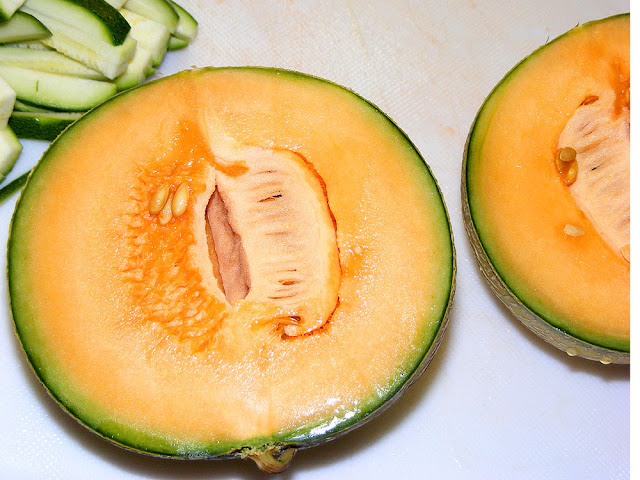 |
Charentais melon, a seasonal locally grown treat. Very few people would bother with melon grown further south and on sale earlier.
|
Ingredients matter -- where they came from, how they were grown, as well as seasonality and regionality. Farm to fork and nose to tail are not newfangled trendy concepts here. Nor is short food supply chains. People practice these ideas as a matter of course, just like their parents and grand parents did.
 |
Our village butcher shop.
|
Lunch is the main meal of the day, and bread is by far the most important carbohydrate, consumed at every meal. There is a very positive relationship with food and eating is associated with conviviality and what makes life worth living. Everyone loves to talk about food and there is pride in the local produce.
A large part of the reason that it seems so difficult to pin down exactly what French food is comes from the fact that all anglophone cuisines have been very heavily influenced by the French style of cooking, although sadly they have not always inherited the sheer joy in eating and cooking that the French demonstrate.
 |
Two young American medical students enjoy the tradition of being crowned if your piece of galette des rois contains the token. This is a local workers restaurant.
|
So what is French cuisine to you and what is your experience of French cuisine?







